Class II Restorations
1/35
There's no tags or description
Looks like no tags are added yet.
Name | Mastery | Learn | Test | Matching | Spaced |
|---|
No study sessions yet.
36 Terms
tofflemire matrix system uses and components
use = class II amalgam restorations
components = retainer + band
can tofflemire matrix system be used for composite restorations?
no
4 types of matrix band
1. universal
2. MOD (has two humps on it, good for deep preps)
3. pedo
4. dead soft bands (bad)
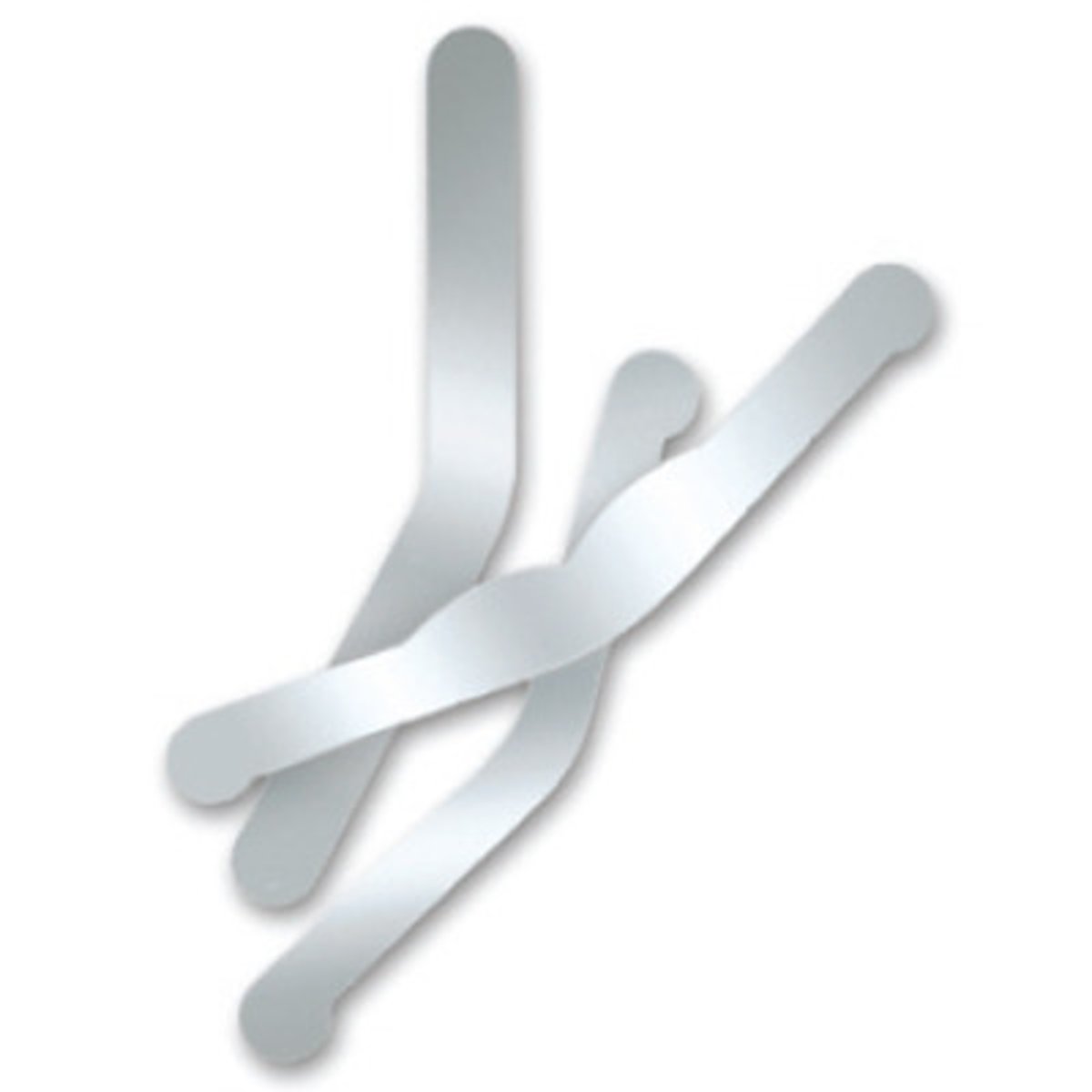
tofflemire matrix bands are used when restoring ___ which is typically class ___ restorations
proximal surfaces
2
benefits of tofflemire matrix band
- proper contact + contour
- confine/ reduce excess material
- protect adjacent teeth
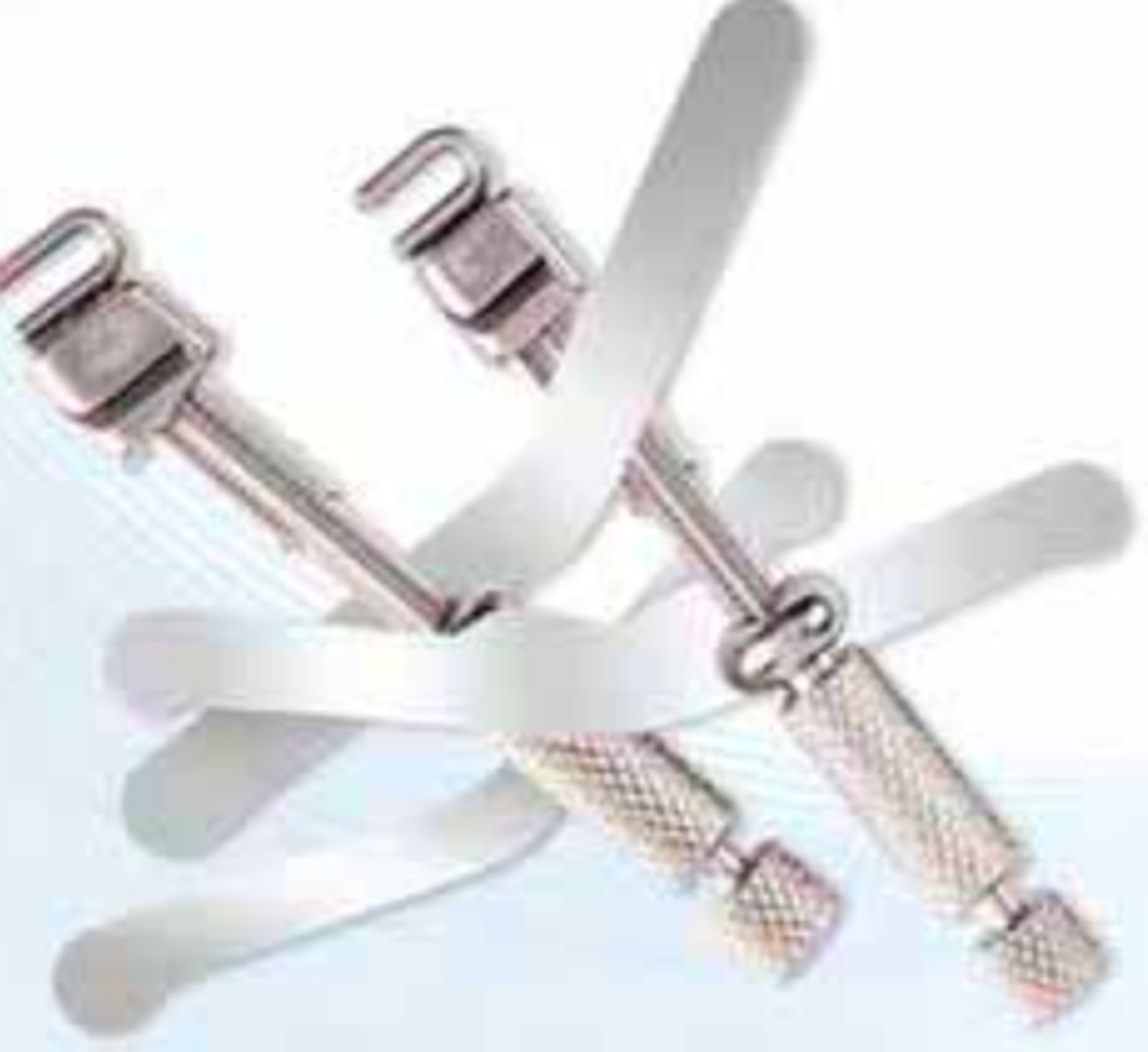
maxtrix bands should extend below ___ and above ___
gingival margins
marginal ridge height
matrix band and burnishing
you can burnish contact area w/ burnisher after placement to create ideal prox contact and contour
placement of retainer: slots? arch?
slots face gingivally and band arch goes towards occlusal
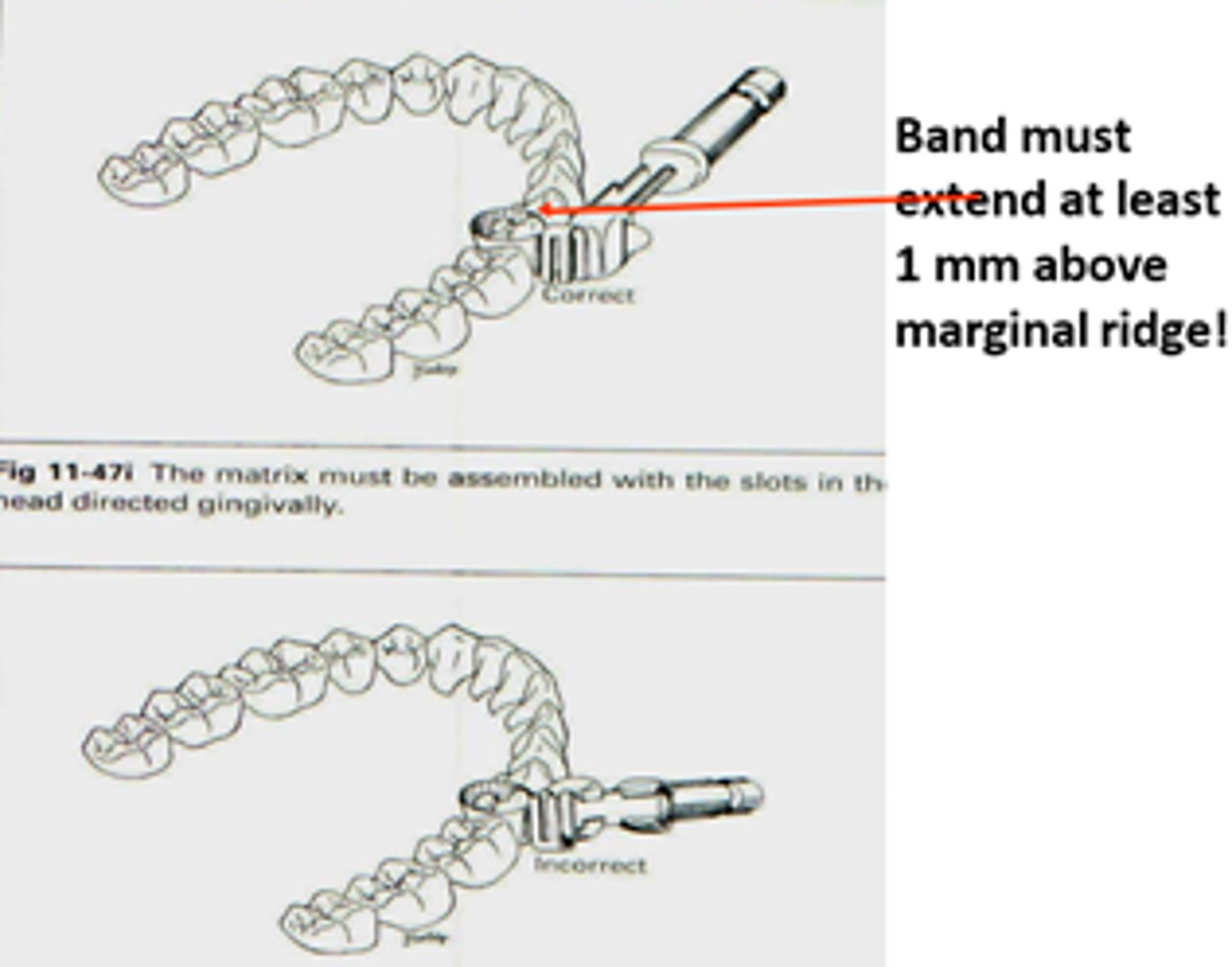
why is placement of retainer important?
allows band to be properly removed
matrix band orientation for mouth quadrants
max right = mand left
max left = mand right
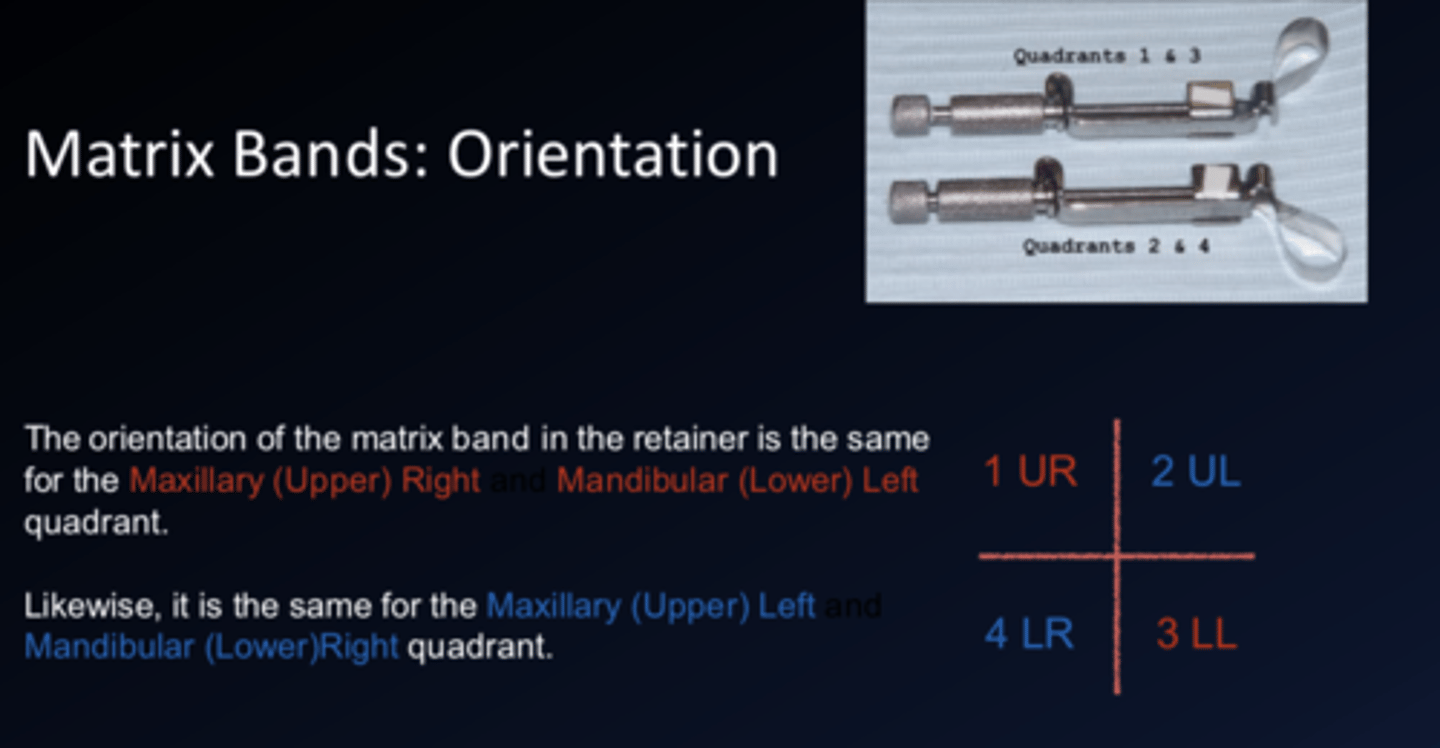
___ end of band should be toward gingival neck of tooth
narrow
where should the retainer be? what would indicate an exception to this?
buccal side
exception = missing buccal wall/ support
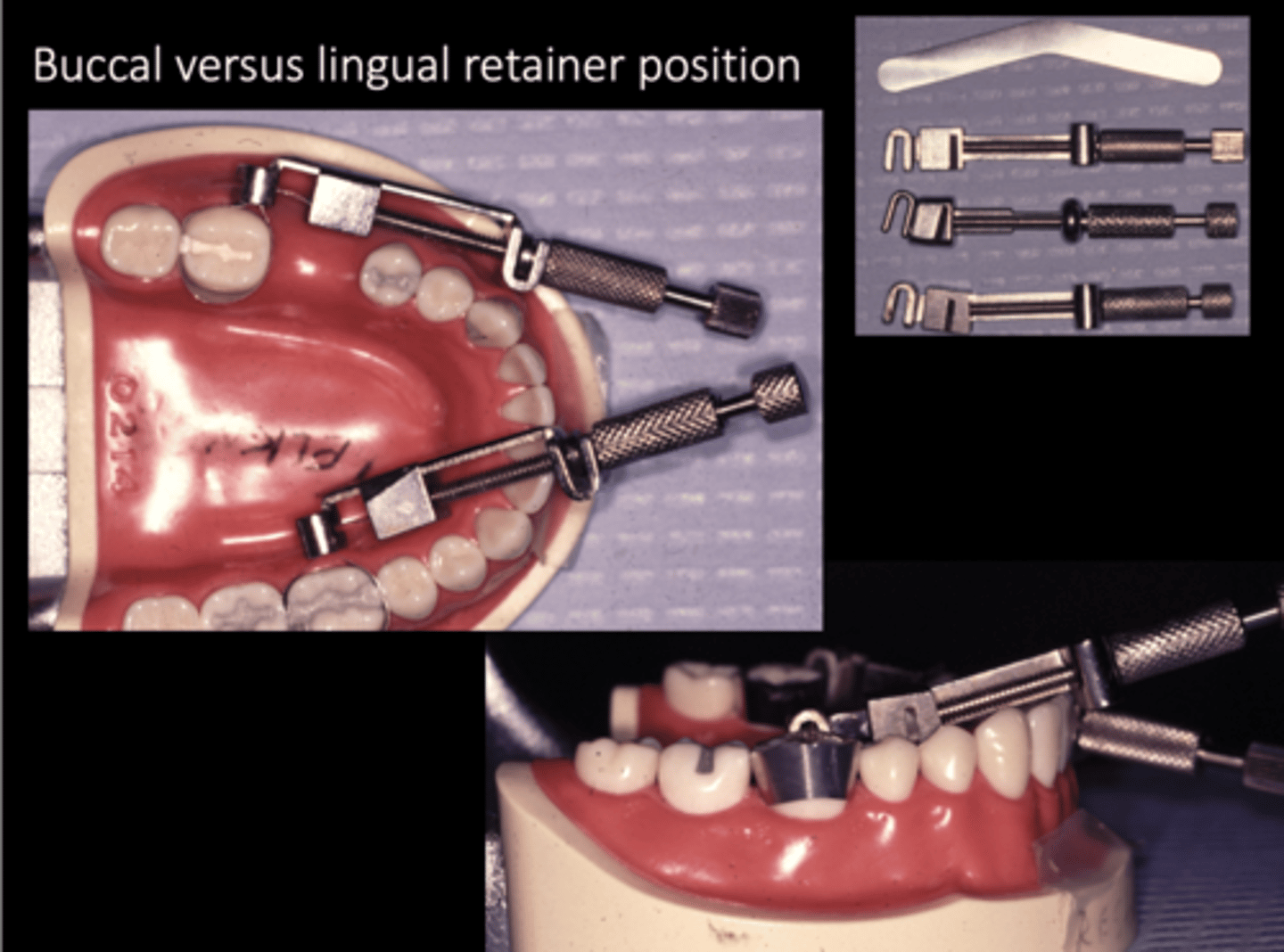
tofflemire placement should be extended ___mm gingival to ___
1mm+
gingival seat
wedge purposes (5)
- tight seal
- no gingival overhangs
- separates teeth
- compensates for band thickness
- creates tight contact
wedge types
1. standard wood
2. anatomic wood
3. anatomic plastic
4. fender plastic
5. other
standard and anatomic wooden wedges are made of ___ and when they get wet ___
sycamore wood
expand and conform to interprox area
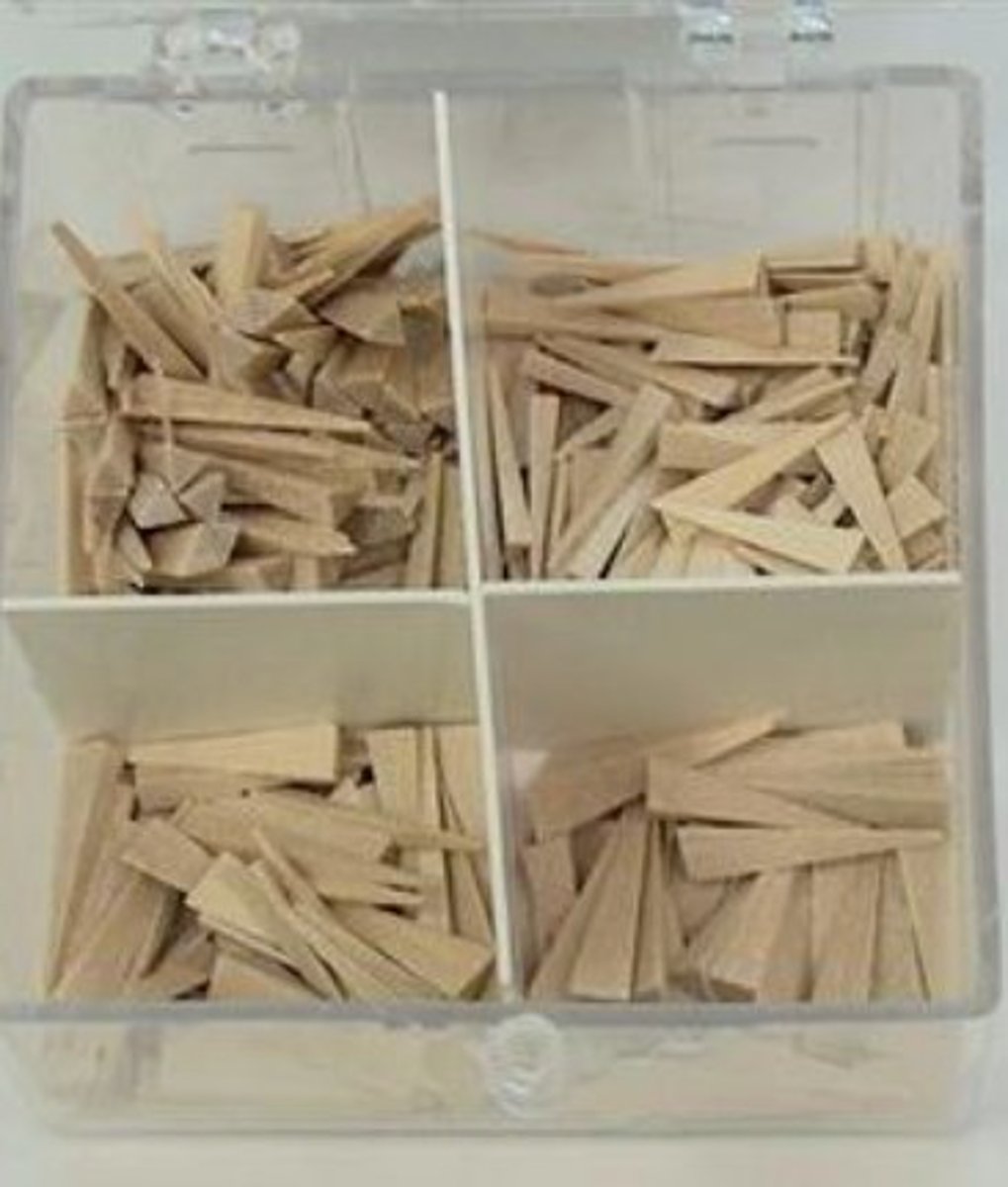
plastic fender wedges are designed to ___ but are ___
protect adjacent teeth
expensive + sharp
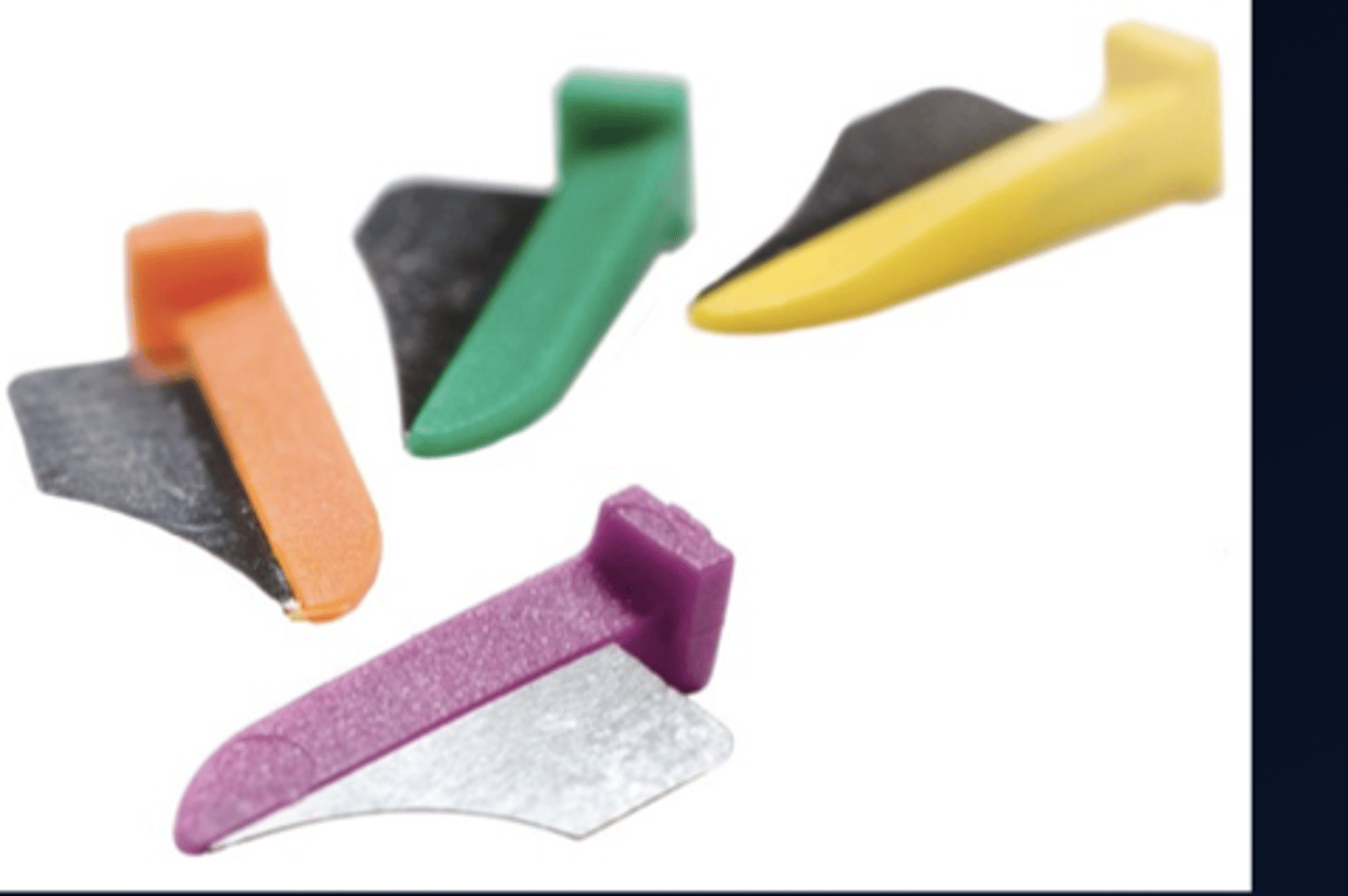
proper wedge positioning must (3)
- retract gingival tissue
- occupy gingival embrasure
- seals gingival seat
what happens if you place a wedge in the wrong position or use the wrong size?
hinder development of physiologic contact
matrix bands are placed so Tofflemire retainer = ___ side of the teeth
buccal
wedges are placed on what side of teeth?
buccal or lingual
wedge from lingual when retainer is on buccal side
instrument to place wedges
cotton forceps or hemostat
goals of amalgam condensations (3)
- compact alloy
- adapt to prep walls + line angles
- decreases excess mercury
condensation should begin ___ and strokes should always be ___
deepest part of prep
orderly and overlaping
goal of carving amalgam
reproduce anatomy for proper form and function*
steps for amalgam carving
1. mental pic of outline form before restoration
2. pre-carve brunish
3. start carving at margins, remove flash
4. finish carving, develop anatomy
5. smooth surface (post-carve burnish)
6. verify + adjust occlusion
contour marginal ridge with ___ when the ___ is present
explorer
matrix band
when amalgam starts to harden but is not fully solidified
1. unscrew and remove tofflemire (keep band in place)
2. remove wedge
3. remove matrix band
matrix removal steps
1. detach amalgam from matrix band w/ explorer
2. loosen nuts on the retainer
3. remove the Tofflemire retainer (hold band in place)
4. remove wedge + band
matrix band should be removed ___º with ___ instruments
vertically at 45º
cotton pliers/ hemostat
what do you do if marginal ridge fractures below cavosurface when matrix band is being removed?
completely remove and redo restoration
once matrix band is out, check for
- overhangs (first)
- interproximal contour
when can you remove rubber dam with amalgam restorations?
AFTER initial carving is complete*
after rubber dam is removed
check and adjust occlusion
after amalgam trituration, the mix should be
smooth and homogenous
before beginning prep
pre-check occlusion